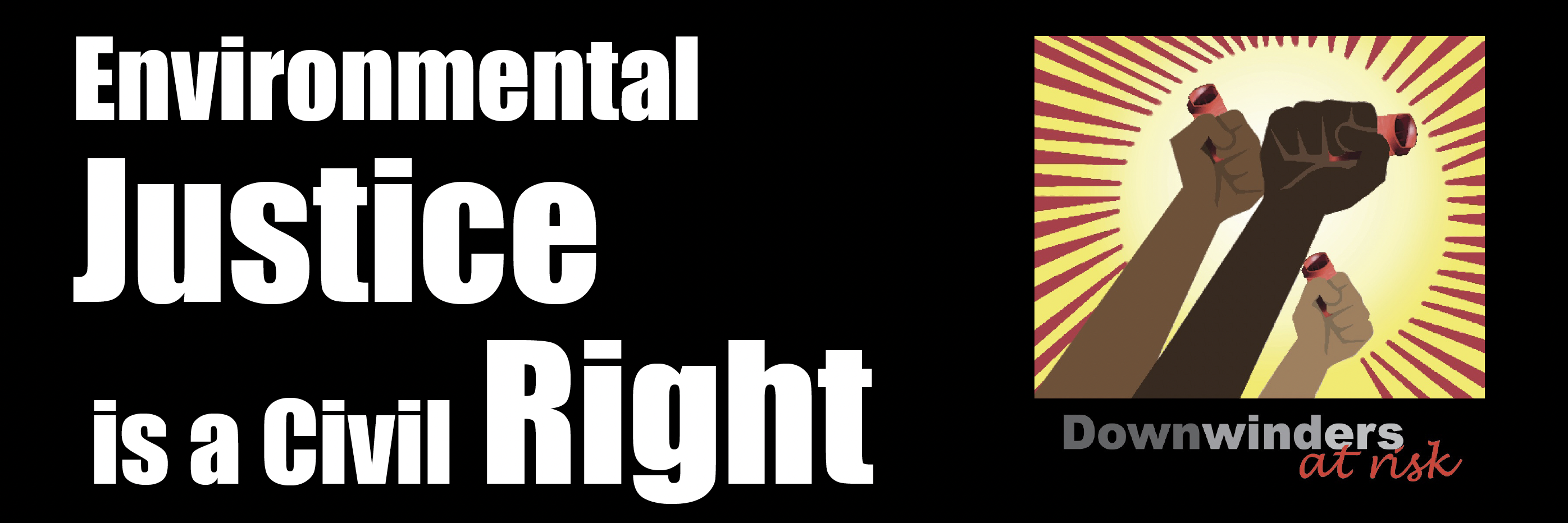Fracking
“Animals are the Sentinels”
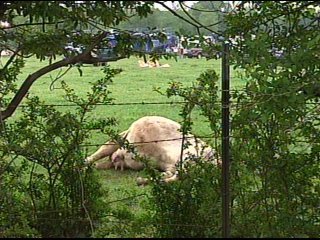 In the late 1980's Sue Pope became concerned about her horses and cows. Her favorite Arabian was developing "heave" muscles on its torso that Pope's vet said was the result of the horse straining to breathe. Her cattle were acting strangely and not developing as they should. These problems seem to come out of the blue, for no obvious reason Pope could figure out. She also noticed that she and her family didn't feel the same either and wondered if what was affecting her animals was also affecting them. She spoke with her neighbors, some of whom were also noticing strange things among their stock and themselves. They didn't have any answers either. That's when Pope started to look for causes outside the gate of her small Midlothain ranch.
In the late 1980's Sue Pope became concerned about her horses and cows. Her favorite Arabian was developing "heave" muscles on its torso that Pope's vet said was the result of the horse straining to breathe. Her cattle were acting strangely and not developing as they should. These problems seem to come out of the blue, for no obvious reason Pope could figure out. She also noticed that she and her family didn't feel the same either and wondered if what was affecting her animals was also affecting them. She spoke with her neighbors, some of whom were also noticing strange things among their stock and themselves. They didn't have any answers either. That's when Pope started to look for causes outside the gate of her small Midlothain ranch.
And that was the beginning of what eventually turned into Downwinders at Risk. Because of her own experience it has been Sue Pope's belief that more than expensive monitors or dubious risk assessment studies, "animals are the sentinels" for human health. They are literally the canary furtherest down the coal mine.
When the ATSDR decided to review the monitoring information from Midlothain for it's "health consultation" beginning almost ten years ago, they were in part drawn by the large file of documented cases of animals illness, disease and deformities. There's more than one animal stock breeder who has moved to Midlothian over the last 25 years expecting that elusive "fresh country air" to benefit their animals only to find them suffering weird symptons never experienced before in previous locations.
Animals are sentinels, especially livestock, because they don't go to school or work, but stay in the same place all day and night, they graze exclusivley on local plants grown in the local soil. They drink the local surface and/or well water. Livestock have the most exposure and the most "exposure pathways" to whatever potentially harmful chemicals might be in the environment. If it's harming the animals, it's probaly harming people as well.
That's the context for a new article out in The Nation about animals gettign sick in the gas patch.
"Earlier this year, Michelle Bamberger, an Ithaca veterinarian, and Robert Oswald, a professor of molecular medicine at Cornell’s College of Veterinary Medicine, published the first (and, so far, only) peer-reviewed report to suggest a link between fracking and illness in food animals. The authors compiled case studies of twenty-four farmers in six shale-gas states whose livestock experienced neurological, reproductive and acute gastrointestinal problems. Exposed either accidentally or incidentally to fracking chemicals in the water or air, scores of animals have died. The death toll is insignificant when measured against the nation’s livestock population (some 97 million beef cattle go to market each year), but environmental advocates believe these animals constitute an early warning.
Exposed animals “are making their way into the food system, and it’s very worrisome to us,” Bamberger says. “They live in areas that have tested positive for air, water and soil contamination. Some of these chemicals could appear in milk and meat products made from these animals.”
In Louisiana, seventeen cows died after an hour’s exposure to spilled fracking fluid. (Most likely cause of death: respiratory failure.) In north central Pennsylvania, 140 cattle were exposed to fracking wastewater when an impoundment was breached. Approximately seventy cows died; the remainder produced eleven calves, of which only three survived. In western Pennsylvania, an overflowing waste pit sent fracking chemicals into a pond and a pasture where pregnant cows grazed: half their calves were born dead. The following year’s animal births were sexually skewed, with ten females and two males, instead of the usual 50-50 or 60-40 split.
In addition to the cases documented by Bamberger, hair testing of sick cattle that grazed around well pads in New Mexico found petroleum residues in fifty-four of fifty-six animals. In North Dakota, wind-borne fly ash, which is used to solidify the waste from drilling holes and contains heavy metals, settled over a farm: one cow, which either inhaled or ingested the caustic dust, died, and a stock pond was contaminated with arsenic at double the accepted level for drinking water."
People used to ask Downwinders why we decided to take on air pollution from the gas industry. The reason is that all of the red flags we saw over the years in Midlothian are also being raised around gas facilities – individually and/or collectlively. Many of the same chemicals, many of the same health effects from those chemicals, and then the warning from the animals.
Better than TCEQ monitors. Better than out-of-date risk assessments. Animals are some of the best Guinea Pigs we have in the laboratory of chemicals we all swim in. If we would only listen.
Red Alert for Dec 20th: Dallas Wants to Drill Like It’s 2009
 This is a heads-up to all Dallas residents: Dallas City Hall – the building, the people, everything – has climbed into a time machine and traveled all the way back to 2010.
This is a heads-up to all Dallas residents: Dallas City Hall – the building, the people, everything – has climbed into a time machine and traveled all the way back to 2010.
This has allowed the City council and staff to ignore citizen demands for a more protective gas drilling ordinance, the defeat of a council member who advocated drilling, the creation and conclusion of a task force for helping write a new ordinance, and a bunch of public hearings over the last two years – all so that Dallas City Hall can now just go ahead and do what the gas operators originally asked it to do at the beginning.
The first Special Use Permit request from a gas well operator to allow drilling in Dallas since 2010 will be on the agenda at the December 20th Dallas Plan Commission meeting at City Hall. It concerns a new request to drill by XTO (Exxon-Mobil) at the old Navel Air Station in southwest Dallas, near the Grand Prairie line, that was submitted on November 16th.
Time it's taken the City of Dallas to write a new drilling ordinance in Dallas: 24 months and counting
Time it took XTO to get its new drilling request heard despite not having that new ordinance yet: 20 days
You can read about the sudden jump into municipal action here behind the DMN paywall.
"XTO’s latest requests are apparently on a fast track, headed to the City Plan Commission….
A new, tougher Dallas drilling ordinance is in the works but has not been approved or even published for review, so the existing ordinance would govern the XTO applications, based on the city’s legal view that one set of rules should apply throughout the process."
Every Dallas City Council member appoints a representative to the City Plan Commission. Dallas residents should call their own City Council member (info here), or their Plan Commission appointee (download a list and contact info here) and tell them to reject this XTO request and any others that try to get processed before a new drilling ordinance is in place.
Here's the media release that Dallas Residents at Risk put out this morning about the sudden turn around:
Dallas Officials Consider Throwing Away Years of Work on New Gas Drilling Ordinance and Simply Let Fracking Begin
Have Mayor Rawlings and the Dallas City Council made a decision to move ahead with existing, pending and even new gas drilling applications without taking any action on the new “fracking” ordinance that has been in the works since 2010?
Two weeks ago, Exxon-owned gas company XTO filed a new gas drilling application—because their previous bid to drill at Hensley Field was denied by the Dallas City Plan Commission two years ago. Then the City Council appointed a special Gas Drilling Task Force, whose members met every week for eight months to consider proposals for a new ordinance. They finished their work in February of this year and issued their official recommendations, yet the City Council has not even begun drafting a new ordinance. The only rumored exception: City officials may consider simply changing the existing ordinance to allow fracking in floodplains, which would be necessary for gas company Trinity East to move ahead with its plans to drill in floodplain areas along the Trinity River. Neighborhood groups and environmental advocates say that’s unacceptable.
"This is the largest retreat of leadership that I can ever remember on such an important public health and environmental issue,” said Jim Schermbeck, Downwinders at Risk. “After three years of citizen complaints, a task force created, convened and concluded, expert and public testimony, and all Dallas residents get is a pair of shrugged shoulders from Mayor Rawlings and the Council? It's a bad joke."
There have been several major scientific studies surrounding the risks of fracking since Dallas officials began debating the new ordinance. Community leaders worry that new evidence pointing to health and safety risks for residents living near drilling sites will simply be ignored.
“So what if there's a 66% higher cancer risk within a half mile of a gas well; so what if already bad Dallas smog is made worse; so what if we still have no idea what chemicals will be used for fracking in Dallas,” said Claudia Meyer of the Mountain Creek Neighborhood Alliance. “It's as if the Mayor and Council are closing their eyes, plugging their ears, and desperately hoping to make all these new facts go away by just pretending they never happened.”
The new drilling applications leave Dallas officials exactly where they started, with the City Plan Commission being asked to shoulder the responsibility of deciding on whether to allow fracking to go forward. Advocates say the Commission should decline this offer and let the City Council do what it said it was going to do: Draft and pass a new gas drilling ordinance first.
“If we were only going to end up where we started, what was the point of a task force, or public hearings or anything that's happened since permitting stopped because the City wanted a new drilling ordinance,” said Zac Trahan with Texas Campaign for the Environment. “This is complete and utter dereliction of duty and public trust by the elected officials of this city on one of the most important public health and environmental questions to face Dallas in decades."
Cuts in Methane and PM Pollution Can Slow Climate Change
 In an opinion piece in The Daily Climate, Michael MacCraken, the chief scientist for the DC-based Climate Institute advocates an end-run strategy to avoid the political logjam over large CO2 cuts as a way to fight global warming. He suggests concentrating on reducing Methane and Particulate Matter pollution as a way to "appreciably slow the rate of warming over the next several decades." He cites an earlier UN study that concluded:
In an opinion piece in The Daily Climate, Michael MacCraken, the chief scientist for the DC-based Climate Institute advocates an end-run strategy to avoid the political logjam over large CO2 cuts as a way to fight global warming. He suggests concentrating on reducing Methane and Particulate Matter pollution as a way to "appreciably slow the rate of warming over the next several decades." He cites an earlier UN study that concluded:
"…a moderately aggressive international emissions control program focused on the short-lived compounds could roughly halve the projected warming between the present and 2050. While slowing the warming through this approach might seem to also offer additional time for cutting CO2 emissions, this is not the case. Instead, these actions are more appropriately viewed as partially making up for earlier policy delays.
For the United States to do its share, aggressive limits on CO2 emissions must be complemented by aggressive limits of emissions of short-lived species. In particular, the Environmental Protection Agency will need to be more aggressive in cutting short-lived emissions, particularly of methane from the oil and gas industry, and making its voluntary methane and black carbon programs mandatory.
With climate change so far along, the question now is no longer whether impacts can be avoided, but rather how bad they will become. What we do with respect to both mitigation and adaptation will control that outcome. The longer we wait, the worse the impacts and sharper the required energy transition."
While methane gradually breaks down in the atmosphere, forming carbon dioxide, it has 100 times the warming potential of carbon dioxide for the first 20 years it’s exposed to the environment. A study by Cornell University Environmental Biology Professor Robert Howarth found between four and eight percent of the methane produced by a fracking well is leaked into the atmosphere during the well’s lifetime. For all the immediate environmental benefits of natural gas, the methods used for its extraction could create a larger greenhouse footprint than oil or coal over time.
EPA is considering a new national PM pollution standard because of its public health impacts and should use the opportunity to win deeper cuts that offer so many "co-benefits." Every reduction in soot is now doubly important. Cars, cement kilns, coal plants, and just about any industrial boiler or furnace spews out PM. They all need to be targeted as part of a larger effort to bring this kind of pollution under better control.
This impact on global warming is also one more reason why Dallas residents should be demanding that the city incorporate some kind of "off-sets" policy regarding new oil and gas air pollution as part of a new City drilling ordinance. Not only can it hep reduce smog and some of the toxins released by the drilling and processing of natural gas; it can also provide some needed help for climate change at a time when the city is just squeaking by its own greenhouse gas reduction goals.
Australian Study: Fracking Releases 3X Normal Greenhouse Gases
S cientists from Southern Cross University in Australia found levels of greenhouse gases in that country's largest fracking play that were three times normal background levels, and higher than those recorded anywhere else on the planet.
cientists from Southern Cross University in Australia found levels of greenhouse gases in that country's largest fracking play that were three times normal background levels, and higher than those recorded anywhere else on the planet.
“The concentrations here are higher than any measured in gas fields anywhere else that I can think of, including in Russia,” Damien Maher, a biochemist who helped conduct the tests, told the Sydney Morning Herald."
Air contaminants being monitored included methane ad carbon dioxide.
"Some scientists surmise that the excess levels are due to seepage of the gas through displaced soil and aquifers that carry “fugitive” emissions released by fracking a mile or more below ground. Carbon cycle expert Peter Rayner of the University of Melbourne told the Australian Broadcasting Corp. that the elevated gas levels were probably due to “emissions that escape from the intended process of production.”
Not surprisingly, there are health complaints form residents living in and near the wells in the play.
"Helen Redmond, a physician with the New South Wales chapter of Doctors for the Environment, cited rising complaints of rashes, nausea, headaches and nose bleeds among people living close to the Tara gas fields.”Hydrocarbon exposure cannot be ruled out as a cause without much more comprehensive investigation,” she told the Sydney newspaper…."
Back here in DFW, Dallas is still stalling on writing a new gas drilling ordinance that citizens want to prompt the nation's first local policy of off-setting greenhouse gas pollution. And many observers believe DFW just failed its second clean air plan in five years because of the impact of rising gas industry pollution.
Fracking the Vote
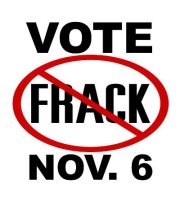 Sharon has the rundown on how various local initiatives about fracking fared yesterday.
Sharon has the rundown on how various local initiatives about fracking fared yesterday.
2nd TCEQ Clean Air Plan in Four Years Fails, Leaves Air Dirtier
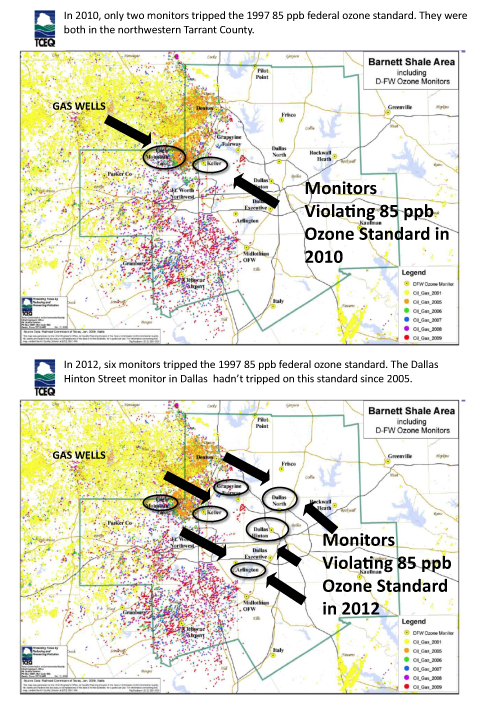 For the second time in four years a state-designed clean air plan to bring safe and legal air to DFW residents has failed, missing its goal by an even wider margin than on its first try, and leaving local air quality worse than when it started.
For the second time in four years a state-designed clean air plan to bring safe and legal air to DFW residents has failed, missing its goal by an even wider margin than on its first try, and leaving local air quality worse than when it started.
November 1st marked the official end of the eight-month 2012 ozone season. According to the Texas Commission on Environmental Quality, or TCEQ, its plan was supposed to deliver record-breaking clean air to DFW this summer on its way to bringing the region into compliance with the Clean Air Act for the first time in two decades.
Does Pollution Discriminate?
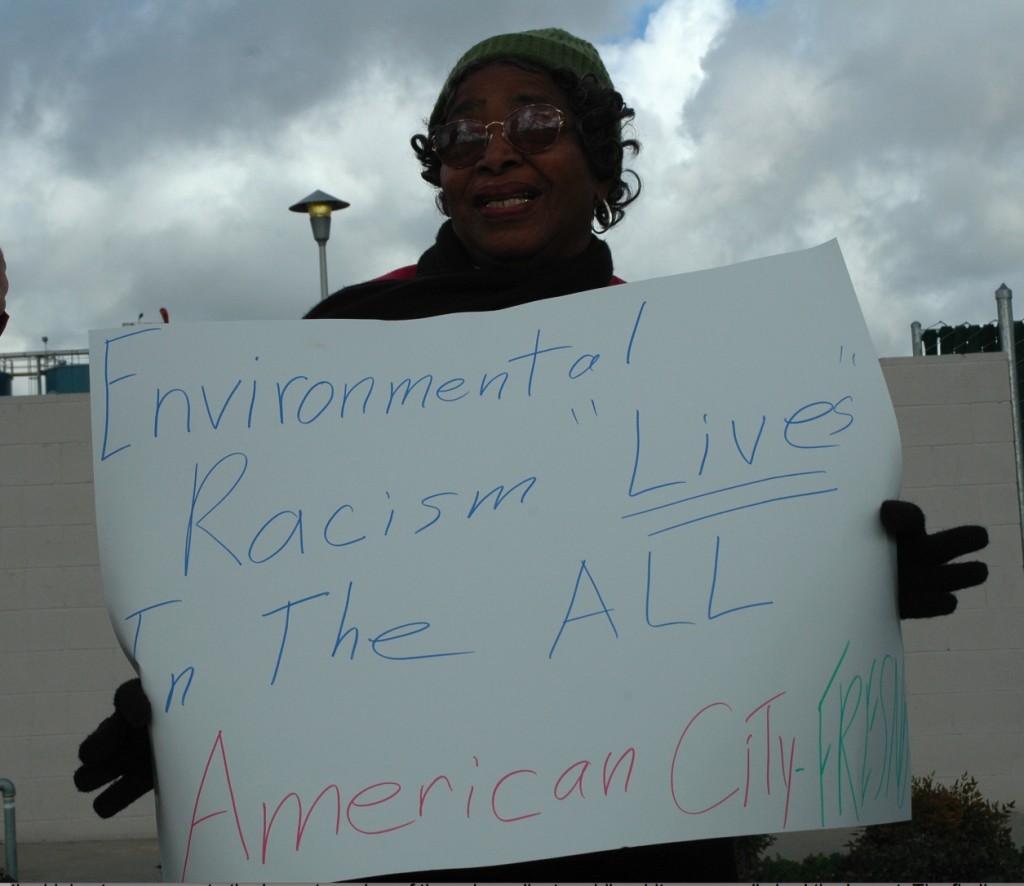 Yes. Or rather the forces that shape where pollution and people co-exist.
Yes. Or rather the forces that shape where pollution and people co-exist.
Historically we know that low-income and non-white urban areas are more likely to have polluting factories, Superfund Sites and illegal dumping. In large part, this is because the places within a city where "undesirable" heavy industries were allowed to locate were also traditionally also the only places where "undesirable" people, re: anybody that wasn't white or had a little money, were allowed to live. This is how you get massive segregated public housing complexes built across the street from huge lead smelters, as was the case in Dallas only a few decades ago. But maybe you thought that was all a thing of the past.
Today comes word of a new study out of Yale that confirms that people of color and the poor in the US suffer disproportionately from exposure to one of the most insidious kinds of pollutants – extremely tiny particles of poisonous soot called Particulate Matter 2.5 (that's soot that's 2.5 microns or less in size. A human hair is about 10 microns wide). Researchers looked at air monitoring and demographic data from five cities – Los Angeles, Pittsburgh, Cincinnati, St. Louis and Fresno. It is the first study to "reveal major racial and economic differences in exposures to specific particle ingredients, some of which are linked to asthma, cardiovascular problems and cancer." Not to mention strokes, and debilitating brain diseases like Parkinson's and Alzheimer's.
"Tiny particles of air pollution contain more hazardous ingredients in non-white and low-income communities than in affluent white ones, new research shows. The greater the concentration of Hispanics, Asians, African Americans or poor residents in an area, the more likely that potentially dangerous compounds such as vanadium, nitrates and zinc are in the mix of fine particles they breathe. Hispanics had the highest exposures to the largest number of these ingredients, while whites generally had the lowest. The findings of the Yale University study add to evidence of a widening racial and economic gap when it comes to air pollution. Communities of color and those with low education and high poverty and unemployment face potentially greater health risks even if their air quality meets federal health standards."
So how does that affect DFW? We need to let studies like this inform our decisions about city planning. In places that have a lot of pollution problems, it's probably a good idea not to keep adding more. Think of where the fracking in Dallas will be taking place – mostly in minority neighborhoods, along the floodplain, with other "undesirable" industries like landfills near-by. Think about the struggle over community control of the CF Hawn freeway re-do of Deadman's Curve in South Dallas where residents want fewer cars going slower instead of more cars going faster. Cars are a big source of PM pollution. Freeways are large conduits for PM pollution. In the last five years there's been a slew of studies showing more asthma and illness the closer you live to a major freeway. Guess which sub-populations get more freeways in their part of town?
There is an environmental equivalent of Affirmative Action that needs to be incorporated into city zoning and planning. One that considers the past historical inequities and current environmental body burden of affected neighborhoods. One that makes sure that society's "undesirables" do not keep getting piled on top of one another
Causality or Coincidence: Oil & Gas Agency Info Tech “Stuck in Mid-90’s”
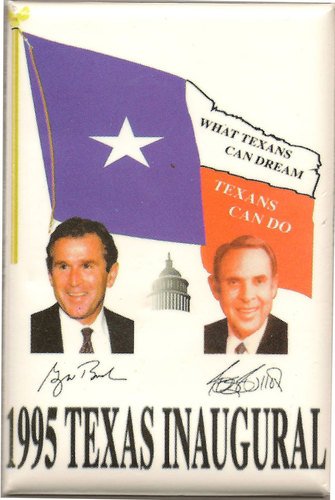 Here's a radio report by KUHF out of Houston that features DFW's own Rita Beving and Rep. Lon Burnam talking about the sorry state of IT at the Railroad Commission. You can't get a good map of a pipeline, look up violations, or report problems in a timely way. One of the RRC Commissioners themselves is quoted as saying their information technology is stuck in the mid-1990's. There was an important election around then that has had a big impact on how state government is run, but we can't quite recall…
Here's a radio report by KUHF out of Houston that features DFW's own Rita Beving and Rep. Lon Burnam talking about the sorry state of IT at the Railroad Commission. You can't get a good map of a pipeline, look up violations, or report problems in a timely way. One of the RRC Commissioners themselves is quoted as saying their information technology is stuck in the mid-1990's. There was an important election around then that has had a big impact on how state government is run, but we can't quite recall…
Groups Petition EPA to Include Frackers in Toxic Release Inventory
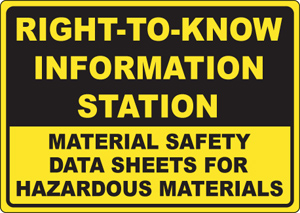 A dozen environmental and citizens groups filed a petition with EPA on Wednesday to close a loophole in the law and include oil and gas pollution in the annual system of self-reporting emissions and releases with which most US industrial polluters already have to comply.
A dozen environmental and citizens groups filed a petition with EPA on Wednesday to close a loophole in the law and include oil and gas pollution in the annual system of self-reporting emissions and releases with which most US industrial polluters already have to comply.
The Toxic Release Inventory, or TRI, was created in the wake of the horrible Union Carbide plant accident in Bhopal, India, that killed 2500 people immediately, and caused another 16,000 deaths in the months and years since. It's supposed to keep track of all hazardous and toxic chemicals on-site or released by industry at every facility regulated – power plants, cement plants, refineries, chemical plants of all kinds, lead smelters, etc. TRI numbers are self-reported once a year by the companies operating the facilities, based on EPA formulas. These numbers are then made available to the public via the EPA's own TRI Explorer site, or independent groups like RTK.net run by the OMB Watch folks.
However, the TRI leaves out a very large industrial segment – oil and gas drilling. This exemption might have made some sense 30 years ago, but it doesn't now, especially given the dramatic rise in modern-day fracking techniques that use large volumes of hazardous and toxic materials.
If EPA regulators went along, that would fold in not just drilling but also related activities at the wellhead, before oil and gas is ready for transport to customers and refiners. Under environmentalists’ petition, companies would be forced to report chemicals released in drilling and completing wells as well as compression operations and processing at fractionators that split gas into separate components.
Disclosures also would be required from hydraulic fracturing operations, in which mixtures of water, sand and chemicals are pumped underground to release natural gas and oil from dense rock formations.
Eric Schaeffer, director of the Environmental Integrity Project that spearheaded the campaign, stressed that the foundation of the TRI was a deeply held belief that the public has a right to know what kind of pollutants are being released from neighboring facilities.
We’re asking the EPA to “honor those values,” Schaeffer said. “EPA has the power to add other sectors that ought to be reporting, and we’re asking them today to exercise the authority.”
Jane Davenport, a senior attorney with the Delaware Riverkeeper Network, said the reporting mandate should apply broadly.
“The oil and gas industry should not get a pass from statutes that apply to other industries,” she said, noting that the industry already enjoys some exemptions from provisions in the Clean Water Act and other environmental laws.
This may not sound like a radical step, but don't discount the power of public disclosure. TRI numbers from the Midlothian cement plant helped Downwiders show that the kilns were the largest industrial and toxic polluters in North Texas, proved the companies were not telling the truth when they said there were no toxic emissions from waste-burning or cement-making, and allowed citizens to track the volumes of pollution coming out of the kilns and analyze those numbers for trends. That's why the oil and gas industry will be fighting tooth and nail to keep the loophole open. Even something as innocuous as disclosing your own chemical information is threatening to operations that have enjoyed historic protections from the public spotlight.
Start the Weekend Off Right: “Don’t Frack My Fairway” Rig Protest Today
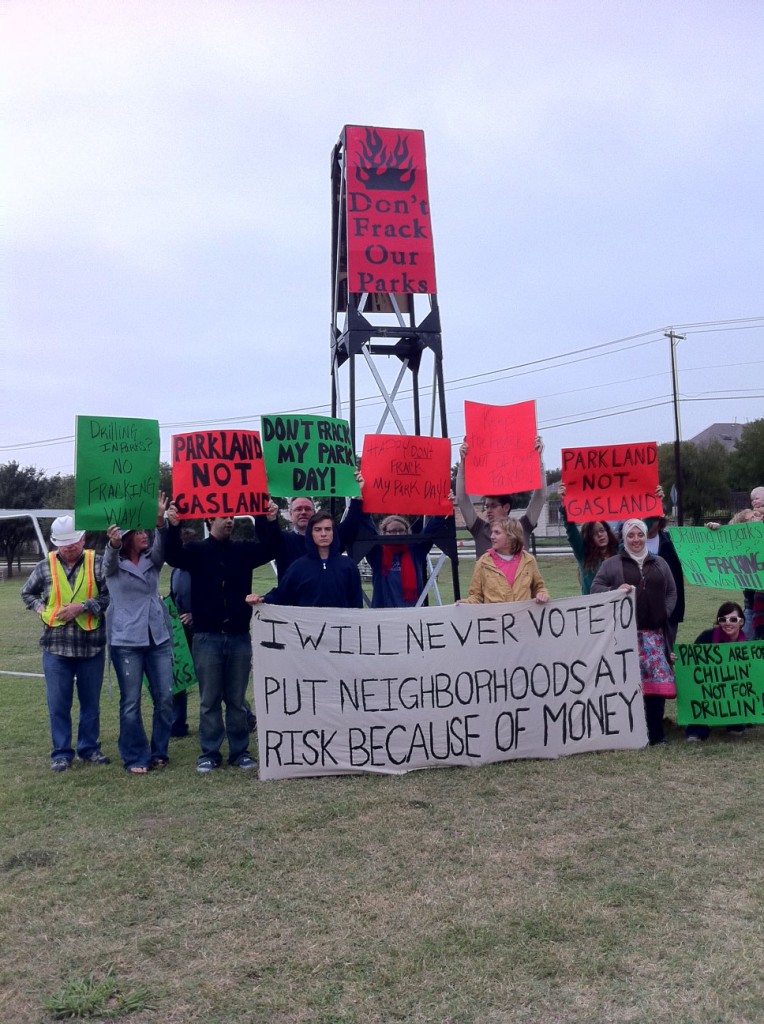 Looking for something to do this Friday late afternoon? Why not join concerned Dallas citizens for a fun little encounter with officialdom out at the newly made-over "Luna Vista" municipal golf course by North I-35.
Looking for something to do this Friday late afternoon? Why not join concerned Dallas citizens for a fun little encounter with officialdom out at the newly made-over "Luna Vista" municipal golf course by North I-35.
Members of Dallas Residents at Risk – a coalition that includes Downwinders – will be showing up at the grand re-opening of what was formally known as the LB Houston Golf Course with their new 15-foot tall mock drilling rig in tow. They'll be trying to set it up next to the course clubhouse where ceremonies attracting City Councilmember Monica Alonzo, Dallas Park Board Vice President Gabriel Soto and Dallas Park and Recreation officials will be taking place.
The course is city parkland and at least three sites within the course have already been leased by the city to Trinity East for fracking – including one adjacent to the driving range.
After two years and a list of task force recommendations, the Dallas City Council is still wrestling with the problems created in 2006 when they took over $30 million from gas operators for leases on city-owned property. The decision was not publicized and there were no public hearings.
Despite not drilling on those sites in the intervening period, gas operators are continuing to seek permission to exploit them. Many of those leases are either in parkland like the Luna Vista sites, or in the Trinity River floodplain. City Council member Sheffie Kadane and others have endorsed park drilling, saying the land is underutilized.
Yes, it's going to be a little chilly. But we need to confront City Hall at every opportunity and this is a prime one. None of the city's press materials that feature beautiful pictures of the course mentions that those views will be marred by taller-than-15-foot drilling rigs. It's up to citizens to raise these issues.
When: 4:30 – 5:30 today/Friday Where: Luna Vista Golf Course Clubhouse, 11223 Luna Road, Dallas
